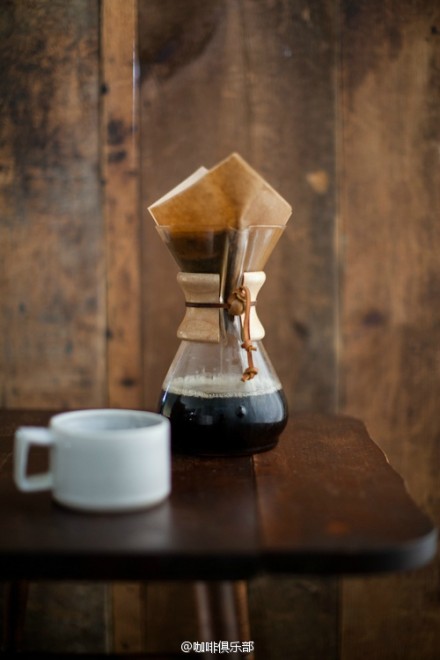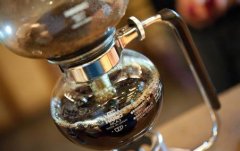The method of making dripping coffee

The characteristics of dripping coffee
The drip filter pot, which originated in the Netherlands, is the best choice for making iced coffee. The most special thing about waterdrop coffee is that cold water is completely used in the process of coffee extraction. General production will let cold water deep baking at the rate of 7 drops in 10 seconds, fine grinding of coffee powder, let coffee slowly extract through cold water. Drink directly or add ice.
The advantage of water drop coffee is not sour and does not hurt the stomach, because using this method to make coffee, most of the coffee beans selected are deep-roasted coffee beans such as Mantlin, because of "shallow roasting but sour, deep roasting bitter but strong". Water drop coffee is another reason why deep-roasted coffee beans are not sour and deep-roasted coffee beans can be diluted with ice after being made, so deep-roasted beans must be selected to filter so as not to be strong enough. The reason why the taste of waterdrop coffee is not astringent is because of the use of cold water. Other coffee brewing methods often use hot water, while hot water with too high temperature will break down some chemicals in the coffee and release astringency, while the dripping coffee is completely filtered with cold water, and the coffee is 100% soaked and wet. the extracted coffee tastes smooth but not sour. Another key to the success or failure of dripping coffee is the dripping speed. With a slow dripping speed of 10 seconds and seven drops, water and coffee powder will be mixed for a long time, so the coffee taste is more saturated. If the dripping time is too fast, the taste is too light. At the same time, it will produce stagnant water spill. On the contrary, too slow will make the coffee ferment, produce sour taste and wine taste.
The method of making dripping coffee
In order to avoid fermentation and maintain flavor, the drip iced coffee must be refrigerated and kept at room temperature for no more than 8 hours. if you need to heat up and drink, you can directly heat it, but be careful not to let the coffee boil when heated.
Should prepare utensils: water drip kettle
Suitable for coffee beans: deep baked beans or Dutch iced coffee beans
Coffee powder consumption and grinding scale: grinding 2: 1.5 in 30g/
Brewing method:
1. Put the amount of coffee powder calculated according to the number of people into the drip and squeeze it gently, then pour in a small amount of water to soak it all.
two。 Put a drip on the beaker and fill the trough with a portion of water. (about three 300~350cc).
3. The lid is closed. It takes different time to make coffee depending on the condition of different utensils.
4. When drinking coffee, remove the lid, bucket trough and drip, pour it into the beaker and add fire, so as not to pour the boiling degree into the cup.
The spread of dripping coffee
Although coffee originated in Ethiopia, it has not been artificially cultivated and cultivated on a large scale in the country of origin. It is the Arabs who really make the coffee artificially planted and cultivated.
In the Arab region, especially in Yemen, there is evidence that coffee cultivation appeared in the fifteenth century. In fact, coffee may have been planted earlier in this region. But conservative Arabs themselves imported coffee seeds from other countries, but after the start of large-scale artificial cultivation, they expected to monopolize this wonderful and attractive crop and regard it as their patent. The Arabs cunningly insisted on banning the export of coffee seeds and even made strict laws to this end.
In the 16th and 17th century, the Netherlands was the most powerful colonial country in the world. Their huge merchant ships and warships sailed on many important shipping routes in the world, not only expanding their territory to the outside world, but also conducting large-scale trade activities. Coffee also has a huge impact on the Dutch. The Dutch East India Company was the largest colonial trading company in the world at that time. In the process of coffee trade, they found that coffee brought high profits, so they envisioned being able to form their own coffee production base to maximize profits in coffee trade.
The Dutch tried countless times to persuade the Arab princes to agree to export coffee seedlings or seeds to them so that their country could fundamentally obtain this fascinating and strange drink, but all efforts were defeated by the Arab refusal. The reluctant Dutch did not give up their illusions. after careful arrangements, in 1616, coffee seedlings and seeds were secretly transported out of the heavily guarded port of Mocha and back to the Netherlands.
After the Dutch shipped coffee seedlings and seeds home, they began to cultivate and grow coffee trees in greenhouses that mimic the Arab environment, temperature and humidity, and eventually succeeded.
With the colonization going on, the Dutch brought coffee to the world. The Dutch overseas colonies once became a major supplier to Europe.
Dripping Coffee-Coffee Culture in the Netherlands
As a big coffee trading country, the Netherlands naturally does not have all kinds of conflicts caused by coffee. Drinking coffee at home began at the turn of the 16th century. Until the opening of the first coffee shop in the mid-1660s, almost "no family did not drink coffee in the morning." Not only the upper-middle class, but also their servants can taste coffee.
These coffee houses all have their own unique style. In particular, the black inlaid walls and shiny copper cry to warm the atmosphere. Many coffee houses set up financial circles, where businessmen and managers often gather to talk business.
In some Dutch cities, coffee houses are set up in beautiful gardens. Here, guests can enjoy coffee in the shade of trees and enjoy the beautiful scenery. This garden coffee shop is especially popular in spring. The whole garden is full of flowers and tulips.
Dripping Coffee-benefits
1. Coffee contains certain nutrients. Nicotinic acid in coffee contains vitamin b, and roasted coffee beans contain more. And there are free fatty acids, caffeine, tannic acid and so on.
two。 Coffee is good for the skin. Coffee can promote metabolic function, activate digestive organs, and has a great effect on constipation. Taking a bath with coffee powder is a kind of thermotherapy, which has the effect of losing weight.
3. Coffee has the function of relieving alcohol. Drinking coffee after drinking alcohol will quickly oxidize the acetaldehyde converted from alcohol, decompose it into water and carbon dioxide and discharge it out of the body.
4. Coffee can relieve fatigue. In order to eliminate fatigue, we must supplement nutrition, rest and sleep, and promote metabolic functions, and coffee has these functions.
5. Three cups of coffee a day can prevent gallstones. For caffeinated coffee, it stimulates gallbladder contraction and reduces cholesterol, which is prone to gallstones. The latest Harvard University researchers found that men who drank two to three cups of coffee a day were less than 40% likely to get gallstones.
6. Drinking coffee regularly can prevent radiation damage. Radiation damage, especially the radiation of electrical appliances, has become a prominent pollution at present. Indian Barba atomic researchers have come to this conclusion in mouse experiments and say it can be applied to humans.
7. The health care and medical function of coffee. Coffee has the functions of anti-oxidation and heart protection, strengthening muscles and bones, benefiting waist and knees, appetizer, eliminating fat and accumulation, promoting orifice and dehumidification, promoting blood circulation and removing blood stasis, relieving wind and relieving spasm and so on.
8. The influence of coffee on mood. Experiments show that the average person absorbs 300 milligrams of caffeine (about 3 cups of brewed coffee) a day, which has a good effect on a person's alertness and mood.
Important Notice :
前街咖啡 FrontStreet Coffee has moved to new addredd:
FrontStreet Coffee Address: 315,Donghua East Road,GuangZhou
Tel:020 38364473
- Prev

The easiest way to brew hand coffee with filter paper
The simplest way to make coffee. Filter paper can be discarded immediately after use, which is more sanitary and easy to clean up. The amount of boiling water and the injection method can also be adjusted. One person can also brew, which is the best way to brew a small number of people. With regard to the appliance drip, there are one hole and three holes. Three holes are used here. The spout for injecting boiling water is preferably small, which can make the boiling water vertical.
- Next

The types and brewing methods of coffee general knowledge of fine coffee
The pure re-cultivation of Japanese charcoal-roasted coffee has created the unique taste of Japanese charcoal-roasted coffee. Xiangchun is bitter and astringent, Hawaii coffee has a strong sour taste and unique aroma, and moderately roasted beans have a strong sour taste. deep roasting flavor please climb a layer of high-rise Blue Mountain Coffee producing area Jamaica, named after the Blue Mountains surrounded by the Caribbean Sea. Sour, sweet,
Related
- Beginners will see the "Coffee pull flower" guide!
- What is the difference between ice blog purified milk and ordinary milk coffee?
- Why is the Philippines the largest producer of crops in Liberia?
- For coffee extraction, should the fine powder be retained?
- How does extracted espresso fill pressed powder? How much strength does it take to press the powder?
- How to make jasmine cold extract coffee? Is the jasmine + latte good?
- Will this little toy really make the coffee taste better? How does Lily Drip affect coffee extraction?
- Will the action of slapping the filter cup also affect coffee extraction?
- What's the difference between powder-to-water ratio and powder-to-liquid ratio?
- What is the Ethiopian local species? What does it have to do with Heirloom native species?

